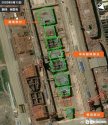A ship’s length and beam, and even draft, offers a relatively poor indicator of its displacement. It’s underwater shape, partially encapsulated in block coefficient, can make the displacement quite different for the same dimensions. Block coefficient measure a hull’s true displacement as a fraction of the displacement of a box with the same overall length, width and depth. In general, a ship with low block coefficient, or smaller displacement for it’s dimension, tend to be Hydrodynamical more efficient. At the same time, it is easier to work in better stability, extensive watertight compartmentalisation, and great depth of protection Against underwater attack in a ship which high block coefficient. However, high block coefficient can also be an indication the ship is constrained in allowable maximum length, beam and draft. Recent US carriers all tend to have high block coefficients because limitations of existing naval docking facilities that dates from WWII limit the extent to which length and beam of US carriers can increase. No doubt the US would have made the Nimitz longer and Beamier for the same displacement had the docking restriction been removed.
So, unless for some reason the Chinese have similar docking restrictions as the USN, I would expect if a Chinese carrier has the same displacement as the Nimitz, then the Chinese carrier would be somewhat longer and beamier, possibly deeper draft, than the Nimitz, but have a finer underwater hull shape.
conversely, if the Chinese carrier has the same length, beam and draft as the Nimitz, the Chinese carrier would have significantly less displacement, thanks again to a finer underwater hull shape.


